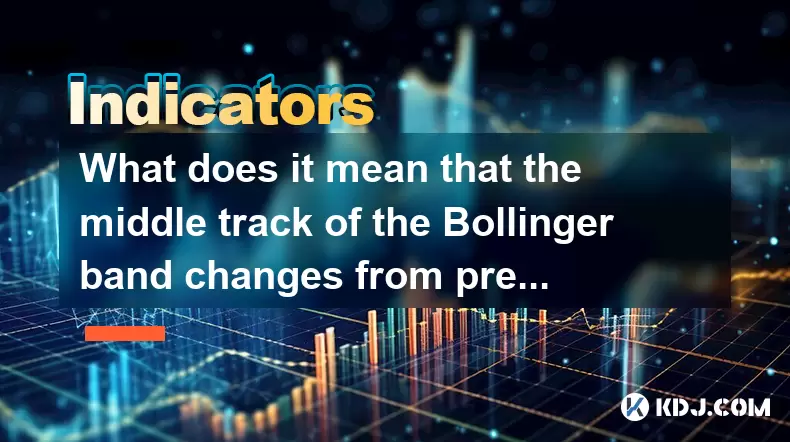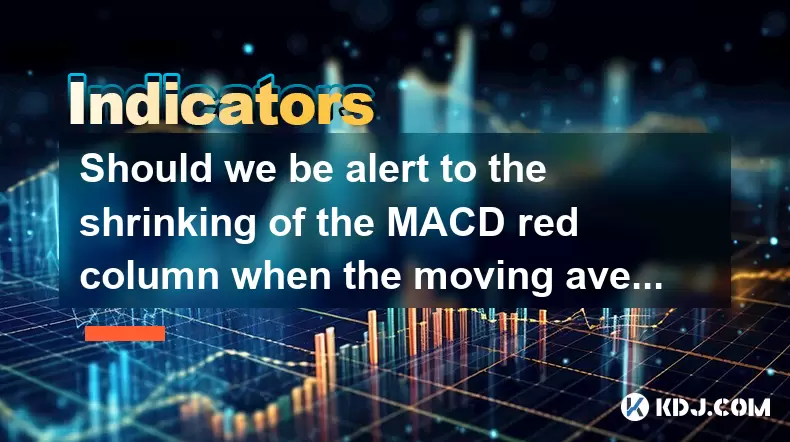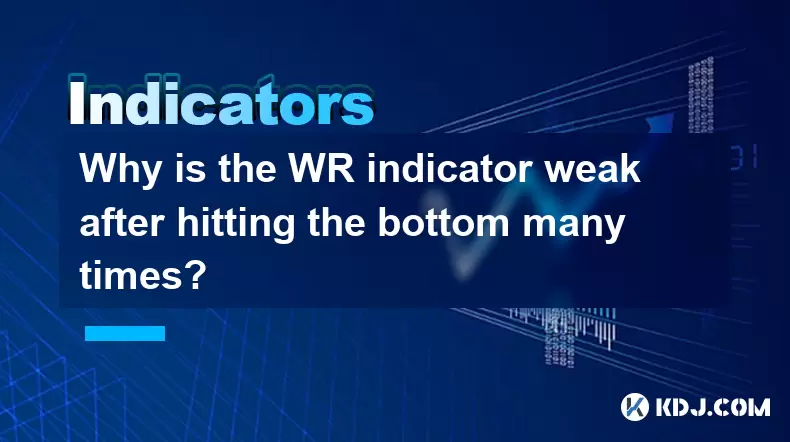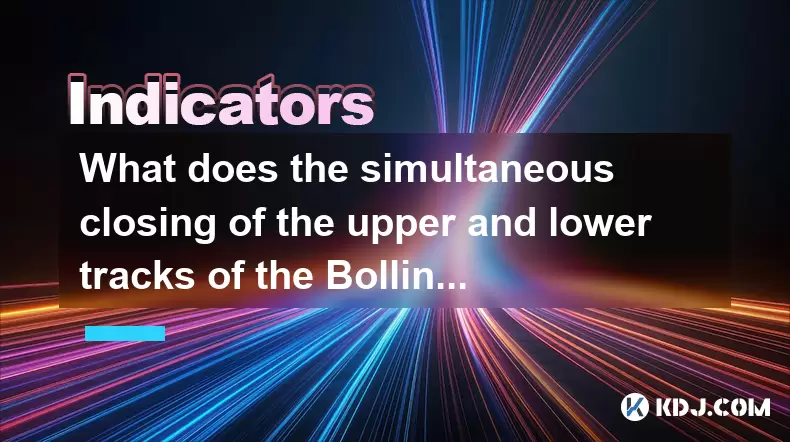-
 Bitcoin
Bitcoin $101,898.5005
-0.75% -
 Ethereum
Ethereum $2,258.1125
-1.07% -
 Tether USDt
Tether USDt $1.0004
0.01% -
 XRP
XRP $2.0178
-2.93% -
 BNB
BNB $624.0243
-1.53% -
 Solana
Solana $134.3298
-0.90% -
 USDC
USDC $0.9999
0.01% -
 TRON
TRON $0.2675
-2.05% -
 Dogecoin
Dogecoin $0.1538
-1.96% -
 Cardano
Cardano $0.5482
-1.11% -
 Hyperliquid
Hyperliquid $35.5636
5.45% -
 Bitcoin Cash
Bitcoin Cash $453.4902
-1.66% -
 Sui
Sui $2.5134
-2.97% -
 UNUS SED LEO
UNUS SED LEO $9.1292
1.77% -
 Chainlink
Chainlink $11.8457
-1.60% -
 Stellar
Stellar $0.2312
-2.73% -
 Avalanche
Avalanche $16.9721
0.29% -
 Toncoin
Toncoin $2.7549
-3.82% -
 Shiba Inu
Shiba Inu $0.0...01081
-1.10% -
 Litecoin
Litecoin $80.8250
-0.71% -
 Hedera
Hedera $0.1374
0.21% -
 Monero
Monero $305.4827
-2.36% -
 Ethena USDe
Ethena USDe $1.0006
0.00% -
 Dai
Dai $1.0000
-0.01% -
 Polkadot
Polkadot $3.2085
-3.12% -
 Bitget Token
Bitget Token $4.0845
-3.13% -
 Uniswap
Uniswap $6.3353
-1.63% -
 Pi
Pi $0.5085
-0.70% -
 Pepe
Pepe $0.0...08913
-3.82% -
 Aave
Aave $232.7090
-0.58%
What does it mean that the middle track of the Bollinger band changes from pressure to support?
When the middle Bollinger Band shifts from resistance to support, it signals a potential bullish reversal in crypto markets, offering high-probability entry opportunities.
Jun 23, 2025 at 03:01 pm

Understanding the Bollinger Band Structure
The Bollinger Bands are a technical analysis tool used in cryptocurrency trading, developed by John Bollinger. They consist of three lines: a simple moving average (SMA) in the middle and two standard deviation bands above and below it. The middle track is typically set at 20 periods and serves as a baseline for price movement. When prices trade near the upper band, the market is considered overbought, while proximity to the lower band suggests oversold conditions.
In crypto markets, where volatility can shift rapidly, understanding how the middle track behaves is crucial. Traders often use this central line as a dynamic support or resistance level. When the price interacts with the middle line multiple times without breaking through, it confirms its role as either a support or resistance zone.
Important Note:
The behavior of the middle track changes depending on the trend and momentum of the asset being analyzed. Recognizing when it transitions from pressure to support provides valuable insight into potential reversals or continuations.What Does It Mean When the Middle Track Becomes Support?
When the middle Bollinger Band shifts from acting as resistance to support, it indicates a change in market sentiment. This transition usually occurs after a downtrend where the price repeatedly tested the middle line and failed to break below it. Over time, traders begin to see that level as a floor rather than a ceiling, prompting buying interest whenever the price revisits it.
This phenomenon is especially relevant in crypto markets, where sharp corrections are common. A strong bounce from the middle band after a decline suggests that institutional buyers or large holders may be accumulating at that level.
- Observe how the price reacts each time it touches the middle band.
- Look for higher lows forming around the middle band during consolidation phases.
- Check volume spikes when the price bounces off the middle line to confirm strength.
Key Insight:
The more times the price respects the middle line as support after previously rejecting it as resistance, the stronger the reversal signal becomes.How to Identify the Shift from Resistance to Support
Identifying this shift involves observing price action in relation to the middle band. Here’s a step-by-step guide:
- Plot the Bollinger Bands on your chart with default settings (20-period SMA, 2 standard deviations).
- Look for a prior phase where the price was consistently rejected by the middle band—this establishes it as resistance.
- Monitor the subsequent price movements to see if the price starts to hold above the middle band.
- Confirm the shift when the price pulls back to the middle band and finds buying pressure instead of selling pressure.
- Use candlestick patterns such as bullish engulfing or hammer formations near the middle band to strengthen the confirmation.
Critical Point:
Volume plays a key role here. A rising volume during the bounce increases the likelihood that the shift is legitimate and not just a temporary retracement.Practical Application in Cryptocurrency Trading
In fast-moving crypto markets like Bitcoin or Ethereum, recognizing this shift can offer high-probability entry points. For example, during a bearish phase, the middle Bollinger Band might act as resistance multiple times. However, once the price breaks above that band and then retests it from above, it signals a potential bullish reversal.
Traders can take advantage of this by entering long positions when the price holds above the middle band after a rejection phase. Stop-loss levels can be placed just below the recent swing low or slightly beneath the middle band itself.
- Enter a buy order when the price tests the middle band after establishing it as support.
- Place a stop-loss order below the most recent lower low before the support test.
- Set profit targets based on previous resistance zones or upper Bollinger Band extensions.
- Use RSI or MACD indicators to filter out false signals and confirm momentum.
Crucial Tip:
Always combine Bollinger Band analysis with other tools like volume indicators or candlestick patterns to avoid false breakouts.Common Misinterpretations and How to Avoid Them
One common mistake among novice traders is assuming that any touch of the middle band signifies a shift in support or resistance. In reality, many of these touches are part of normal price fluctuations and do not indicate a real trend reversal.
To avoid misreading the data:
- Do not act on a single touch of the middle band unless it coincides with strong volume and clear price structure.
- Ignore instances where the price barely touches the middle band and immediately moves away without a meaningful reaction.
- Wait for at least two to three successful tests of the middle band as support before considering it a valid level.
- Be cautious during sideways or choppy market conditions where Bollinger Bands tend to contract and lose their predictive value.
Warning:
Overreliance on Bollinger Bands alone can lead to premature entries or missed opportunities. Always cross-reference with other indicators and broader market context.Frequently Asked Questions
Q: Can the middle Bollinger Band switch roles multiple times?
Yes, the middle band can alternate between acting as support and resistance depending on market conditions. This often happens during ranging markets or during periods of indecision.
Q: Is the 20-period setting mandatory for this strategy?
No, the 20-period setting is a standard default, but traders can adjust the period length based on their trading style. Short-term traders may prefer shorter periods, while longer-term traders might extend it.
Q: Should I always wait for multiple touches before confirming support?
It's safer to wait for at least two touches before treating the middle band as confirmed support. Single touches can often be misleading, especially in highly volatile crypto assets.
Q: How does this apply to altcoins compared to major cryptocurrencies like BTC or ETH?
Altcoins can exhibit similar patterns, but due to lower liquidity and higher volatility, false signals may occur more frequently. Extra caution and confirmation via volume or candlesticks are recommended.
Disclaimer:info@kdj.com
The information provided is not trading advice. kdj.com does not assume any responsibility for any investments made based on the information provided in this article. Cryptocurrencies are highly volatile and it is highly recommended that you invest with caution after thorough research!
If you believe that the content used on this website infringes your copyright, please contact us immediately (info@kdj.com) and we will delete it promptly.
- DOGE Recovery Amid US-Iran Tensions: A Market Rollercoaster
- 2025-06-23 20:45:13
- Fiserv, PayPal, and Stablecoins: A New Era of Interoperability?
- 2025-06-23 20:45:13
- Shytoshi Kusama, SHIB Dev, and Alpha Layer: Decoding the Latest Developments
- 2025-06-23 20:25:12
- BTC, ETH, and Institutional Buying: Smart Money Piling In?
- 2025-06-23 20:25:12
- Sonic Boom or Market Gloom? Navigating Volatility with Sonic, SPX6900, and Crypto
- 2025-06-23 20:55:12
- Shakespeare Coin for Sale: Rare Find or Fool's Gold?
- 2025-06-23 20:55:12
Related knowledge

Does the second golden cross of MACD above the zero axis represent the continuation of strength?
Jun 23,2025 at 08:21pm
Understanding the MACD IndicatorThe Moving Average Convergence Divergence (MACD) is a widely used technical analysis tool in cryptocurrency trading. It consists of three main components: the MACD line, the signal line, and the histogram. The MACD line is calculated by subtracting the 26-period Exponential Moving Average (EMA) from the 12-period EMA. The...

Is it effective when the DIF line suddenly crosses the zero axis when the volume is shrinking and the market is trading sideways?
Jun 23,2025 at 07:29pm
Understanding the DIF Line in Technical AnalysisThe DIF line, or the Difference Line, is a critical component of the MACD (Moving Average Convergence Divergence) indicator, widely used in technical analysis across cryptocurrency and traditional financial markets. It represents the difference between the 12-period EMA (Exponential Moving Average) and the...

Should we be alert to the shrinking of the MACD red column when the moving average is arranged in a bullish pattern?
Jun 23,2025 at 08:14pm
Understanding the MACD Red Column and Its SignificanceThe Moving Average Convergence Divergence (MACD) is a widely used technical indicator in cryptocurrency trading. It consists of three main components: the MACD line, the signal line, and the MACD histogram (the red column). The red column represents the difference between the MACD line and the signal...

Why is the WR indicator weak after hitting the bottom many times?
Jun 23,2025 at 07:56pm
Understanding the WR Indicator in Cryptocurrency TradingThe Williams %R (WR) indicator is a momentum oscillator used by traders to identify overbought and oversold levels in the market. It ranges from 0 to -100, with readings above -20 considered overbought and below -80 considered oversold. In the context of cryptocurrency trading, where volatility is ...

Is the shrinking cross star after the historical high a signal of topping?
Jun 23,2025 at 05:56pm
Understanding the Shrinking Cross Star PatternIn technical analysis, candlestick patterns are essential tools for traders to predict potential price movements. One such pattern is the shrinking cross star, which appears as a small-bodied candle with long upper and lower shadows, indicating indecision in the market. When this pattern forms after an asset...

What does the simultaneous closing of the upper and lower tracks of the Bollinger Bands indicate?
Jun 23,2025 at 09:01pm
Understanding Bollinger Bands in Cryptocurrency TradingBollinger Bands are a widely used technical analysis tool in cryptocurrency trading. Developed by John Bollinger, this indicator consists of three lines: the middle band is typically a 20-period simple moving average (SMA), while the upper and lower bands represent two standard deviations above and ...

Does the second golden cross of MACD above the zero axis represent the continuation of strength?
Jun 23,2025 at 08:21pm
Understanding the MACD IndicatorThe Moving Average Convergence Divergence (MACD) is a widely used technical analysis tool in cryptocurrency trading. It consists of three main components: the MACD line, the signal line, and the histogram. The MACD line is calculated by subtracting the 26-period Exponential Moving Average (EMA) from the 12-period EMA. The...

Is it effective when the DIF line suddenly crosses the zero axis when the volume is shrinking and the market is trading sideways?
Jun 23,2025 at 07:29pm
Understanding the DIF Line in Technical AnalysisThe DIF line, or the Difference Line, is a critical component of the MACD (Moving Average Convergence Divergence) indicator, widely used in technical analysis across cryptocurrency and traditional financial markets. It represents the difference between the 12-period EMA (Exponential Moving Average) and the...

Should we be alert to the shrinking of the MACD red column when the moving average is arranged in a bullish pattern?
Jun 23,2025 at 08:14pm
Understanding the MACD Red Column and Its SignificanceThe Moving Average Convergence Divergence (MACD) is a widely used technical indicator in cryptocurrency trading. It consists of three main components: the MACD line, the signal line, and the MACD histogram (the red column). The red column represents the difference between the MACD line and the signal...

Why is the WR indicator weak after hitting the bottom many times?
Jun 23,2025 at 07:56pm
Understanding the WR Indicator in Cryptocurrency TradingThe Williams %R (WR) indicator is a momentum oscillator used by traders to identify overbought and oversold levels in the market. It ranges from 0 to -100, with readings above -20 considered overbought and below -80 considered oversold. In the context of cryptocurrency trading, where volatility is ...

Is the shrinking cross star after the historical high a signal of topping?
Jun 23,2025 at 05:56pm
Understanding the Shrinking Cross Star PatternIn technical analysis, candlestick patterns are essential tools for traders to predict potential price movements. One such pattern is the shrinking cross star, which appears as a small-bodied candle with long upper and lower shadows, indicating indecision in the market. When this pattern forms after an asset...

What does the simultaneous closing of the upper and lower tracks of the Bollinger Bands indicate?
Jun 23,2025 at 09:01pm
Understanding Bollinger Bands in Cryptocurrency TradingBollinger Bands are a widely used technical analysis tool in cryptocurrency trading. Developed by John Bollinger, this indicator consists of three lines: the middle band is typically a 20-period simple moving average (SMA), while the upper and lower bands represent two standard deviations above and ...
See all articles
























































































